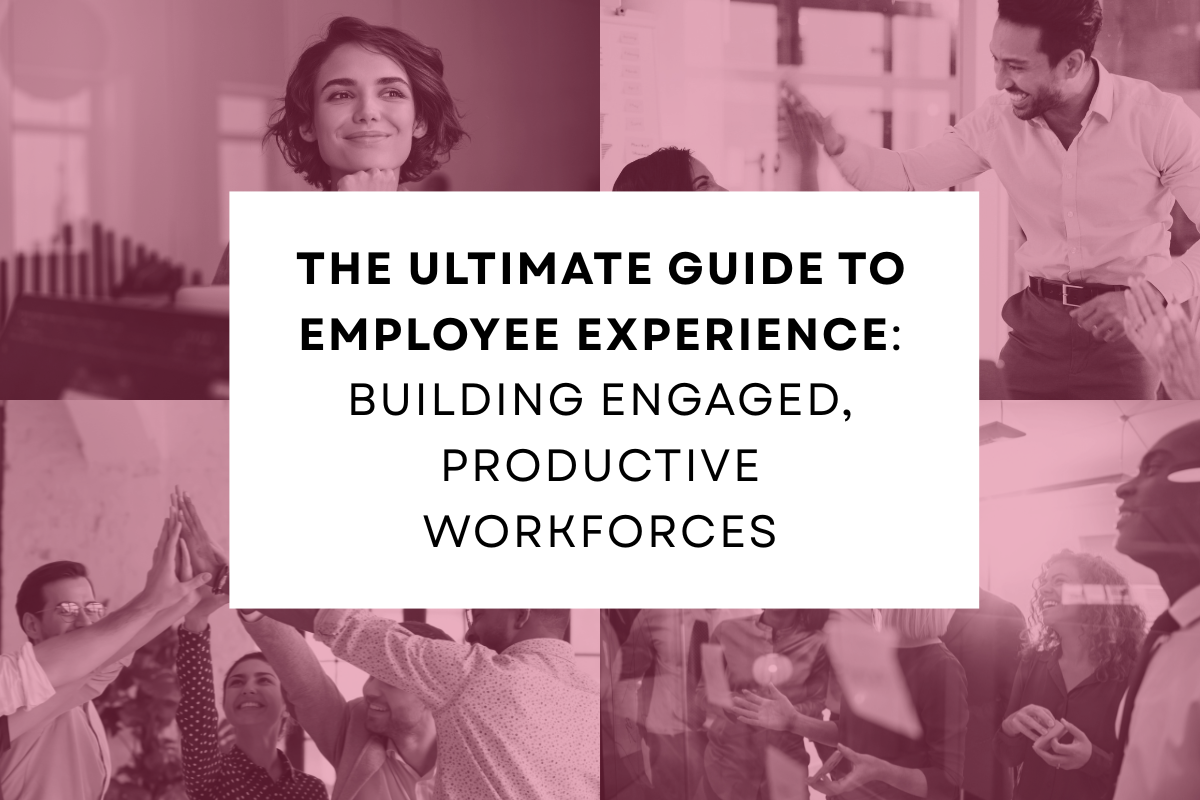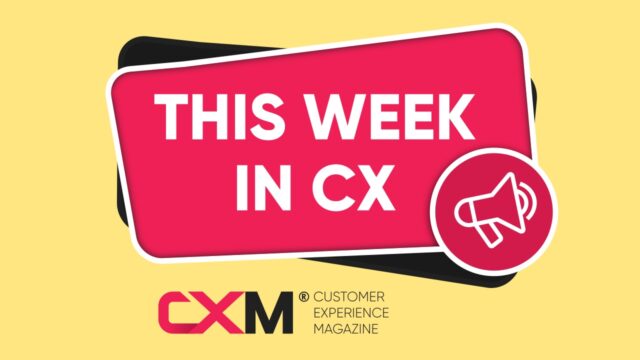October 13, 2025
The Ultimate Guide to Employee Experience: Building Engaged, Productive Workforces

Every company understands that its employees are important, but few understand how to create an environment where workers can truly flourish.
For businesses looking to attract talent, increase productivity, and maintain long-term growth, employee experience (EX) has emerged as the organising principle. EX covers every interaction an employee has with the workplace, from onboarding to offboarding, from technology to culture, in contrast to traditional HR approaches that focus only on benefits and compliance. Some even argue that employee experience begins even before the person starts working for the company.
This guide explores the fundamentals of employee experience, including what it is, why it matters, and how to create an EX strategy that promotes engagement and quantifiable business results.
1. Defining Employee Experience in the Modern Workplace
Employee experience refers to the totality of all interactions and touchpoints between an individual and their organisation. EX encompasses emotions, perceptions, systems, physical and digital environments, and the invisible architecture of policies, culture, and leadership.
Some key dimensions of EX include:
- Touchpoints & interactions — moments such as recruitment, onboarding, performance discussions, peer feedback, technology usage, and exit
- Emotional responses — trust, frustration, belonging, clarity, ambiguity
- Operational infrastructure — tools, workflows, systems, policies
- Cultural signals and norms — what behaviour is rewarded, what is tolerated, and how leaders behave.
Unlike older constructs like “employee satisfaction” or even “engagement,” EX demands a systems lens that’s designed for flow, reducing friction, and making meaning.
Why this definition matters
- It changes things from one-time events (like recognition) to ongoing design and iteration.
- It promotes shared responsibility across departments (IT, operations, HR, leadership) instead of just putting it on HR.
- It surfaces hidden costs: friction, waste, burnout, turnover, misalignment.
Because EX is made up of many levels (process, culture, leadership, systems), trying to improve only one of these levels usually doesn’t work very well.
2. The Business Impact of EX Investment
To gain traction with executives and business leaders, employee experience must be tied to outcomes executives care about: performance, risk, and value. The data now shows EX is squarely in that domain.
Global engagement rates fell to 21% in 2024, marking one of only two declines in the past 12 years. In the U.S., engagement has dropped to a decade low, with just 31% of employees actively engaged and 17% actively disengaged.
This is important because engagement and experience translate directly into the health of the workforce. EX plays a major role in whether people join, stay, and perform at their best.
That’s one reason why companies are investing in technology: 74% of organisations plan to roll out an employee experience platform by 2025. At the same time, worker priorities are changing. They want more schedule flexibility, regardless of location: in one U.S. survey, 47% of knowledge workers said they still don’t have the control over working hours they want, and more than a third said they’d turn down jobs that don’t offer it.
Improving Retention
People leave when their experience worsens, whether it’s because of unclear roles, clunky systems, or a lack of support.
Employee retention gets better when it works. Productivity rises, too, because employees spend less time chasing approvals or fixing errors and more time actually doing their jobs. Innovation thrives when people feel safe enough to push ideas forward. This is reflected directly in customer outcomes: workers who feel trusted and supported are far more likely to deliver good service.
So, businesses are now looking at performance in a different way. Employees don’t want to work the way they used to, so annual reviews are being replaced by ongoing feedback and development conversations.
Another example is internal mobility. Employees who can move laterally or upward inside a company are much more likely to stay, which boosts loyalty and agility at the same time. Even offboarding has become strategic, since how you treat people as they leave sends a strong cultural signal, and respectful exits reduce negative spillover among the staff who remain.
Taken together, these dynamics show that employee experience is not a soft metric but is tightly linked to retention, productivity, brand, and ultimately customer outcomes.
3. Employee Journey Mapping
If customer journey maps help companies understand how people experience a brand, employee journey maps do the same for the workplace. The idea is to chart the different stages of the employee lifecycle — from the moment someone first encounters a job ad to the day they leave — and identify the touchpoints that shape how they feel along the way.
A journey map should usually capture:
- Stages: key phases (recruitment, onboarding, growth, engagement, transition)
- Touchpoints: all moments where the employee interacts with systems, people, processes
- Emotional arc: how people likely feel at each touchpoint
- Pain points / friction zones: where delays, confusion, errors, or misalignment occur
- Moments that matter: inflection points (first week, first feedback, first promotion, return from leave, exit)
- Underlying causes: root factors (policy gaps, system lag, misalignment of roles, manager behavior)
- Potential interventions: ideas to improve, remove friction, or better signal values
- Ownership & measurement: who is responsible, what metrics to watch
Because employees are not homogeneous, maps should be built for personas (e.g., remote vs on-site, new hire vs veteran, frontline vs knowledge work).
Use Case: Onboarding Journey
Almost 90% of employees decide whether to stay at a company within the first six months of employment. This is why a strong employee onboarding experience has to provide clarity, confidence, and a sense of connection.
Traditionally, onboarding was administration-heavy. Now it’s turning into a staged, relational, and experiential journey that consists of:
- Preboarding (between offer acceptance and first day) to reduce uncertainty
- First week: socialisation, clarity on role, meeting key people
- First month: capability development, small wins, feedback loops
- First 90 days: paths to integration, performance touchpoints, peer relationships
By aligning metrics (e.g. early attrition, satisfaction scores, ramp time) with feedback and stories from new joiners, gaps surface: late equipment delivery, unclear goals, no peer connection, and missing system access. Those gaps become intervention points.
Ultimately, journey mapping is less about creating a glossy diagram and more about building empathy. It asks leaders to look at the workplace through the eyes of their people. When done well, it turns scattered processes into a coherent experience that makes employees more likely to engage, grow, and stay.
4. EX Technology and the Digital Workplace
Technology is no longer a back-office function; it’s now a frontline driver of the employee experience. Employees expect digital tools to be as intuitive and empowering as the apps they use in daily life, from communication platforms to career development resources. When technology works well, it reduces friction, improves productivity, and even boosts engagement.
Core areas where EX technology makes a tangible impact include:
- Collaboration platforms like Teams, Slack, and Zoom allow distributed teams to communicate seamlessly, bridging the gap between remote and in-office work.
- Employee listening tools such as pulse surveys, sentiment analysis, and real-time feedback platforms that help organisations spot issues before they escalate.
- HR tech ecosystems, including talent management, performance management, and learning platforms, which centralise critical workflows and provide visibility for employees and managers alike.
- AI-driven personalisation, which tailors communication, career paths, and benefits to individual needs, making employees feel recognised and supported.
Beyond the core tools, there is another set of advanced solutions for the next generation of EX:
- EX dashboards that provide managers and leaders with real-time insights into engagement, productivity, and well-being.
- Integrated digital hubs, where employees can access all workplace resources, such as documents, tools, learning, and HR services, in one place, reducing friction and confusion.
- Wellbeing tech aimed at mental health and burnout prevention, including apps for meditation, stress tracking, and workload management.
When thoughtfully implemented, EX technology reduces friction, empowers employees, and strengthens engagement across the workforce. By mapping the digital touchpoints and integrating them with cultural and operational initiatives, organisations can make the digital workplace a true driver of performance rather than a source of frustration.
5. Measuring Employee Experience
What companies measure is what they end up improving. Yet, many still depend on a single annual engagement survey, which often captures issues far too late. A modern employee experience strategy requires a broader set of indicators and more frequent listening.
One widely used approach is the Employee Net Promoter Score (eNPS), which asks how likely employees are to recommend their workplace to others. While simple, its value lies in tracking changes over time and following through with visible action on the feedback shared.
Beyond that, engagement surveys that explore areas such as recognition, clarity, and manager support offer a richer view of employee motivation and discretionary effort.
Other key EX metrics include:
- Attrition and retention rates: Indicators of workplace health. High turnover, especially in early tenure, is often a warning sign that onboarding or support structures are lacking.
- Productivity and performance metrics: Correlating EX with business output. Correlating employee experience data with operational outputs can reveal strong links between satisfaction and efficiency
- Wellbeing indices: Regular pulse questions on stress, balance, and energy levels help detect risks of burnout before they escalate.
Best Practices in Measuring EX
Forget those long, annual employee surveys. They just don’t cut it anymore. If your company still uses them, you’re not getting the full picture. Workers want to share their thoughts more often and see that their feedback leads to real changes. A study by Qualtrics showed that 77% of employees want to give feedback more than once a year, but many companies are stuck in old ways.
That’s why pulse checks and continuous listening models are now the standard. Quick surveys, open-text feedback, and even anonymous channels give employees room to be candid. Research revealed that workers who receive meaningful feedback in the past week are 80% more likely to be fully engaged, showing that frequency matters just as much as quality.
Surveys are okay, but sentiment analysis is where it’s at. These tools scan employee comments, chats, and work platforms to see if people feel hopeful, frustrated, or burned out. You can’t get that from just looking at numbers. Qualtrics calls it “listening at scale“, and it’s pretty much what people expect these days.
Benchmarking is useful, but leaders are realising it’s more powerful to spot patterns internally: which teams are thriving, which are showing early signs of disengagement, and what’s driving the difference. Only 22% of employees believe their company will act on feedback, which means organisations can’t afford to just measure but to prove the loop is closed.
After all, metrics only matter if they lead to action. A recent study found that the most common failure in employee surveys is a lack of follow-through, leaving staff skeptical and disengaged. When leaders actually share results, commit to changes, and show progress, feedback stops feeling like a black hole and employees start taking it seriously.
6. Building an EX-Driven Culture
Culture is the backbone of employee experience. Processes and technology may streamline workflows, but they won’t inspire people to stay, grow, or advocate for their employer.
When culture aligns with employee needs, engagement thrives; when it doesn’t, even the best digital tools can’t fix the disconnect. Deloitte research shows that companies with a strong culture are twice as more likely to experience high employee engagement.
Core elements of an EX-driven culture
- Leadership commitment – Leaders set the tone. Gallup found that managers account for 70% of the variance in team engagement.
- Psychological safety – Teams thrive when people feel safe raising concerns or ideas without fear of backlash.
- Recognition and appreciation – One study shows that 68% of HR professionals link recognition programmes to better retention.
- Flexibility – McKinsey reports that 87% of employees will take flexible work options if offered.
- Purpose and meaning – PwC found that 79% of business leaders say purpose is central to success, but only 34% of employees feel it guides daily decisions.
Case Studies in Action
Microsoft is often cited as a success story after turning its culture around a “growth mindset.” By shifting recognition away from being the smartest person in the room and toward curiosity, collaboration, and learning, the company revitalised engagement and boosted its reputation as an attractive employer.
At Salesforce, culture is anchored in the concept of “Ohana,” or family. Inclusion and belonging are built into operations through equality councils, volunteering initiatives, and leader accountability. This has contributed to consistently high rankings on “Best Places to Work” lists and lower-than-average turnover.
Patagonia has long been celebrated for its commitment to environmental activism and ethical business practices. The company’s culture is deeply intertwined with its mission to “save our home planet,” a philosophy that permeates every aspect of its operations and employee experience. Patagonia’s commitment to its employees and their well-being has resulted in one of the lowest employee turnover rates in the industry, with some reports indicating a turnover rate of just 4%.
Conclusion
Employee experience is now bigger than simple surveys and benefits. It’s now the core of how companies run and get bigger.
The actual distinction between firms that merely talk the talk and ones that excel at employee experience is actually doing what they claim. If you hear but fail to act, people will assume you don’t care. But if you listen and adapt, people will stay.
Companies that use feedback to change how work is done, make their leaders better, and make things clear see real improvements in keeping employees, getting more work done, and making customers happier.
When employees have what they need—tools, clear directions, and a safe place to be themselves—they focus better and are more creative. Computers help by making things easier, getting feedback, and showing how people feel right away. But it’s the company vibe that keeps things going well. A vibe based on trust, why the company exists, and being flexible makes sure people feel connected to their teams and what the company is trying to do.



